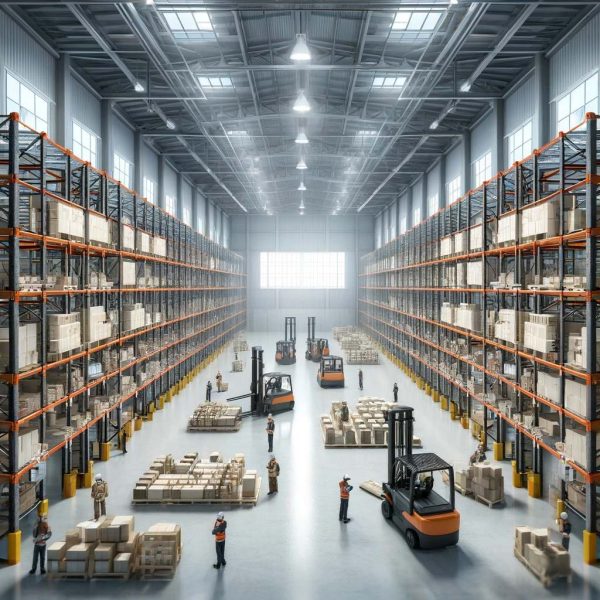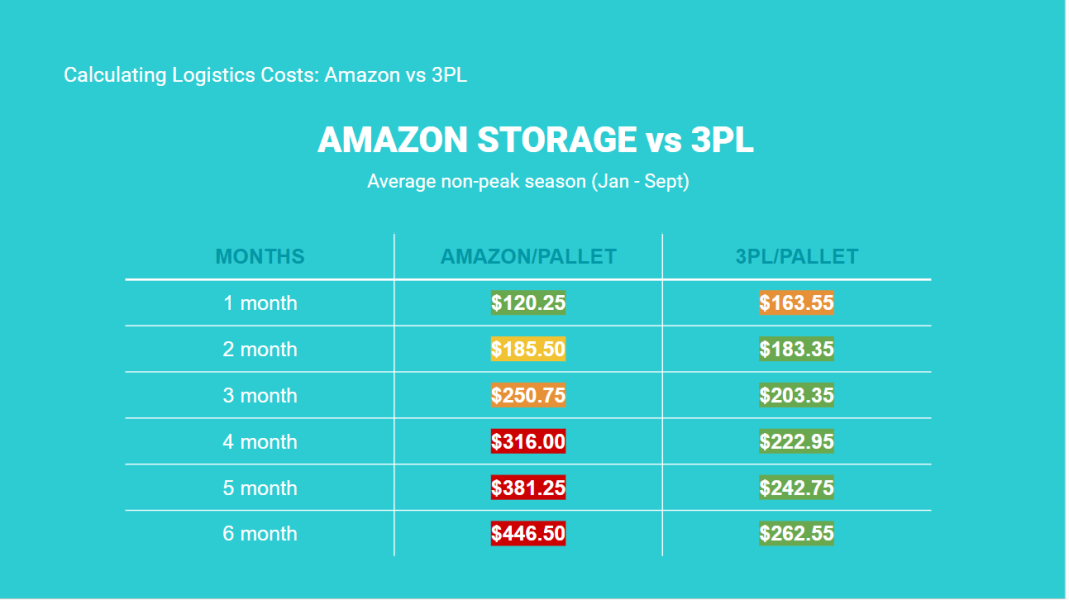How to Cut Your FBA Pallet Storage Costs with a 3PL
If you’re using Amazon’s Fulfillment by Amazon (FBA) service, you know how quickly storage fees can add up, especially for pallet-sized shipments. Managing these costs effectively not only optimizes your budget but can also enhance your operational efficiency. Here’s a breakdown of what you can expect from Amazon in 2024 and how partnering with a third-party logistics provider (3PL) like Tactical Logistic Solutions can benefit your Warehousing & Distribution needs.
Table of Contents
Looking for a 3PL Company for your Amazon Product or Ecommerce Business?
How Much Are Amazon FBA Storage Fees in 2024?
Amazon FBA storage fees are structured based on the time of year and the dimensions and volume of your inventory. Specifically, Amazon charges more during the peak holiday seasons (October to December) due to higher warehouse space demand. As of 2024, the fee structure is divided into two major seasons:
January to September (standard) and October to December (peak). Fees for standard-size items may start at a base rate per cubic foot and increase for oversized items. Hazardous materials or items requiring special handling could incur additional costs.
FBA Storage Fees by Product Size and Type
Amazon’s storage fees are categorized based on the size and type of products, which affects how much you’ll pay to store your inventory. Here’s how these fees typically break down:
Standard-Size Items:
- Non-Peak Months (January-September): Approximately $0.75 per cubic foot.
- Peak Months (October-December): Rates can increase to around $2.40 per cubic foot due to higher demand for storage space.
Oversized Items:
- Non-Peak Months: Starting at about $0.48 per cubic foot, significantly higher than standard due to the increased space and handling required.
- Peak Months Size: Fees can rise to approximately $1.20 per cubic foot.
Product Types:
- Electronics: May incur additional fees due to the need for special handling and security measures.
- Apparel: Typically requires more space per unit and may be subject to fees that reflect the bulk and turnover rate of the inventory.
- Hazardous Materials: Incur the highest fees due to the need for specialized storage and handling procedures. These fees can be several times the standard rate, depending on the nature of the materials.
Understanding the distinction between these categories is essential for effectively managing your logistics budget. By knowing what each type of product costs to store, you can better plan your inventory strategy and potentially seek more cost-effective alternatives like using a 3PL provider during peak times or for oversized items.
How Much to Store Your Amazon Product with a 3PL
Using a 3PL for warehousing your products instead of relying solely on FBA can provide more dynamic pricing options. 3PLs often calculate storage costs based on the exact amount of space your inventory occupies, which can vary monthly based on your inventory levels. This contrasts with Amazon’s fixed cubic foot pricing, which can lead to paying for unused space. During non-peak periods, or for products with steady, predictable demand, the cost benefits of a 3PL can be particularly striking, as these providers may offer lower rates to fill unused warehouse space.
Average Storage Costs for 3PL Warehousing
In 2024, the cost of storing goods in a 3PL warehouse can depend greatly on factors such as geographical location, the complexity of services provided (like pick and pack, fulfillment, temperature control), and the total volume of goods stored. On average, prices might range from as low as $10 per pallet per month to $75 or more, depending on specific needs. For many businesses, especially those with larger volumes of inventory or those needing flexible storage solutions, 3PLs often represent a more adaptable and cost-effective option compared to Amazon’s more rigid pricing structure.
Methods to Cut FBA Pallet Storage Costs
Here are some strategic approaches to reduce your FBA storage fees:
- Optimize Current Processes and Workflows: Streamline how you manage inventory to minimize unnecessary storage.
- Reduce Product Box Size: Smaller packaging can lead to significant savings in both storage and shipping.
- Make Part of the Product DIY to Save Space: Consider which parts of your product could be assembled by the customer to reduce pre-assembly storage needs.
- Figure Out Value-Added and Non-Value-Added Steps: Eliminate non-essential steps in your logistics chain.
- Optimize Storage Space + Maximize Available Space: Use data-driven strategies to ensure you’re using the optimal amount of storage space for your needs.
Using a 3PL to Reduce Long-Term FBA Storage Costs
Long-term storage fees at Amazon can be prohibitive. A 3PL like Tactical Logistic Solutions can negotiate better rates due to their volume and relationships, turning what was once a fixed cost into a variable and more manageable one. Additionally, 3PLs offer scalability—allowing you to use more or less space based on your current business needs without penalty.
Tactical Logistic Solutions provides cutting-edge technology, and a deep understanding of e-commerce logistics needs. IF you’re looking to streamline your supply chain, reduce costs, or improve service delivery, we’re here to help.
For more information on how we can assist you in optimizing your FBA storage solutions, visit our website or Contact Us directly at (201)809-1222 or email us at info@tacticallogistic.com. Let us help you transform your logistics operations into a competitive advantage.
FAQ
Amazon FBA storage fees are costs charged for storing products in Amazon’s fulfillment centers. These fees vary based on the size and type of the product, as well as the season, with higher rates typically during the peak season from October to December.
FBA storage fees are primarily calculated based on the volume (in cubic feet) that your inventory occupies in the fulfillment center. The fees differ between standard-size and oversized items and are also influenced by specific product types like electronics or hazardous materials.
Using a 3PL can provide more flexibility in storage fees, often offering pricing based on actual space used which can fluctuate month by month. This can be more cost-effective, especially for non-peak periods or for bulk storage needs.
You can reduce FBA storage costs by optimizing your inventory management, reducing packaging size, considering DIY options for products, and identifying and eliminating non-value-added steps in your storage process.
Consider switching to a 3PL if you find FBA costs during peak seasons too high, need more flexible storage options, or if you are looking to expand storage capacity without significantly increasing costs.










